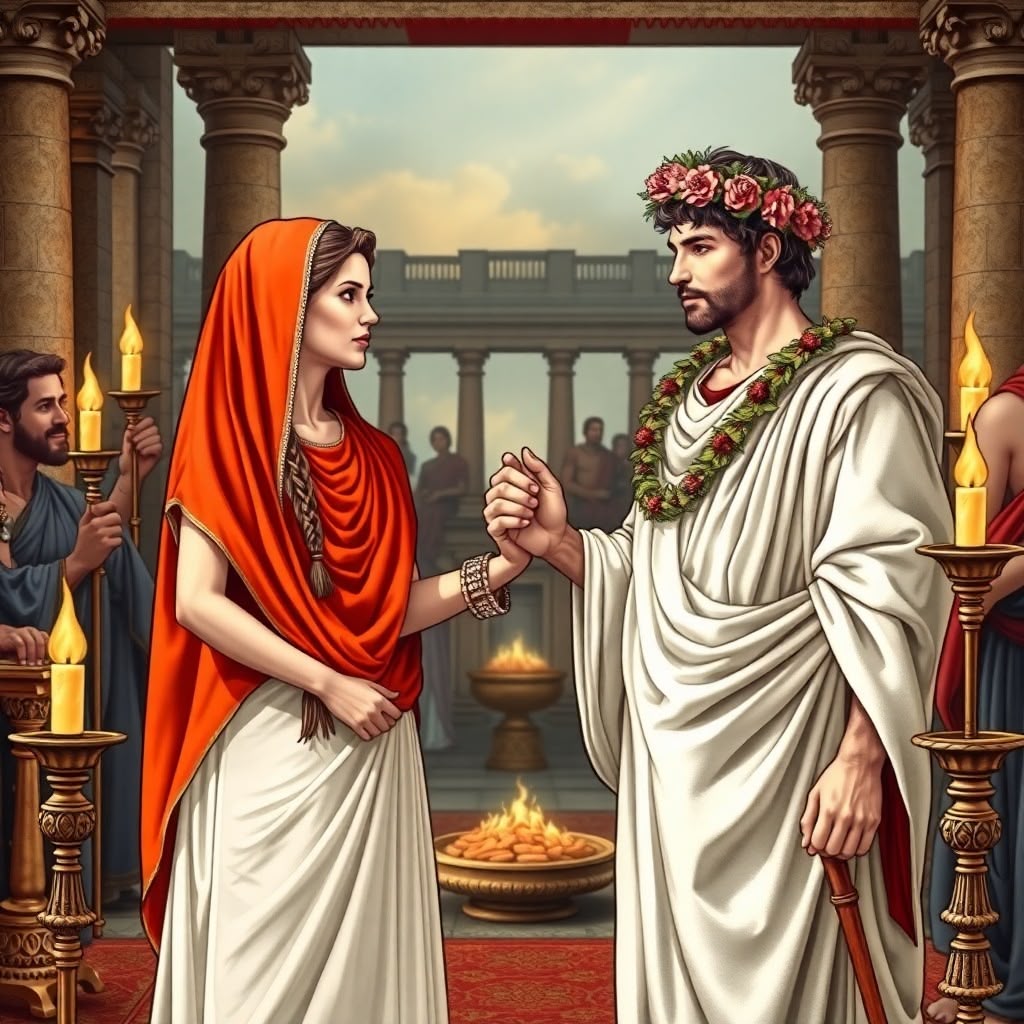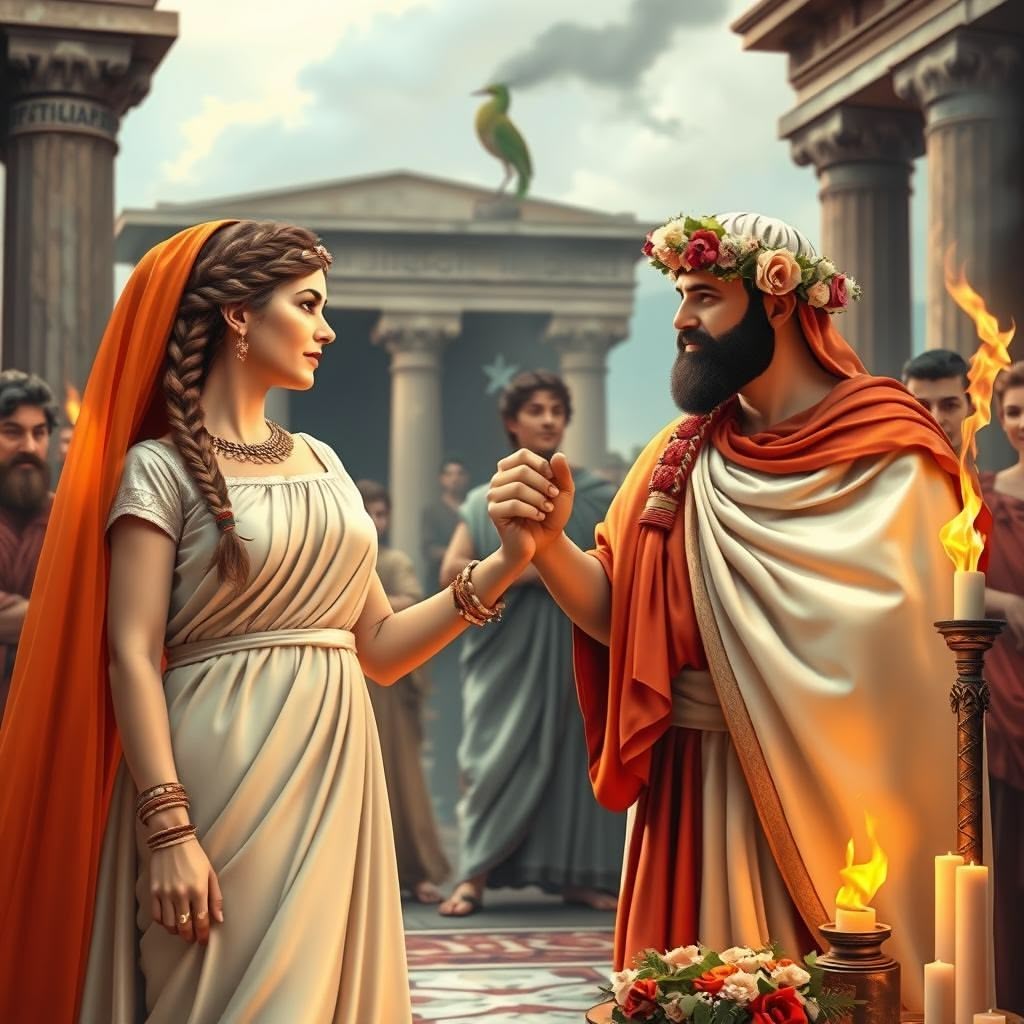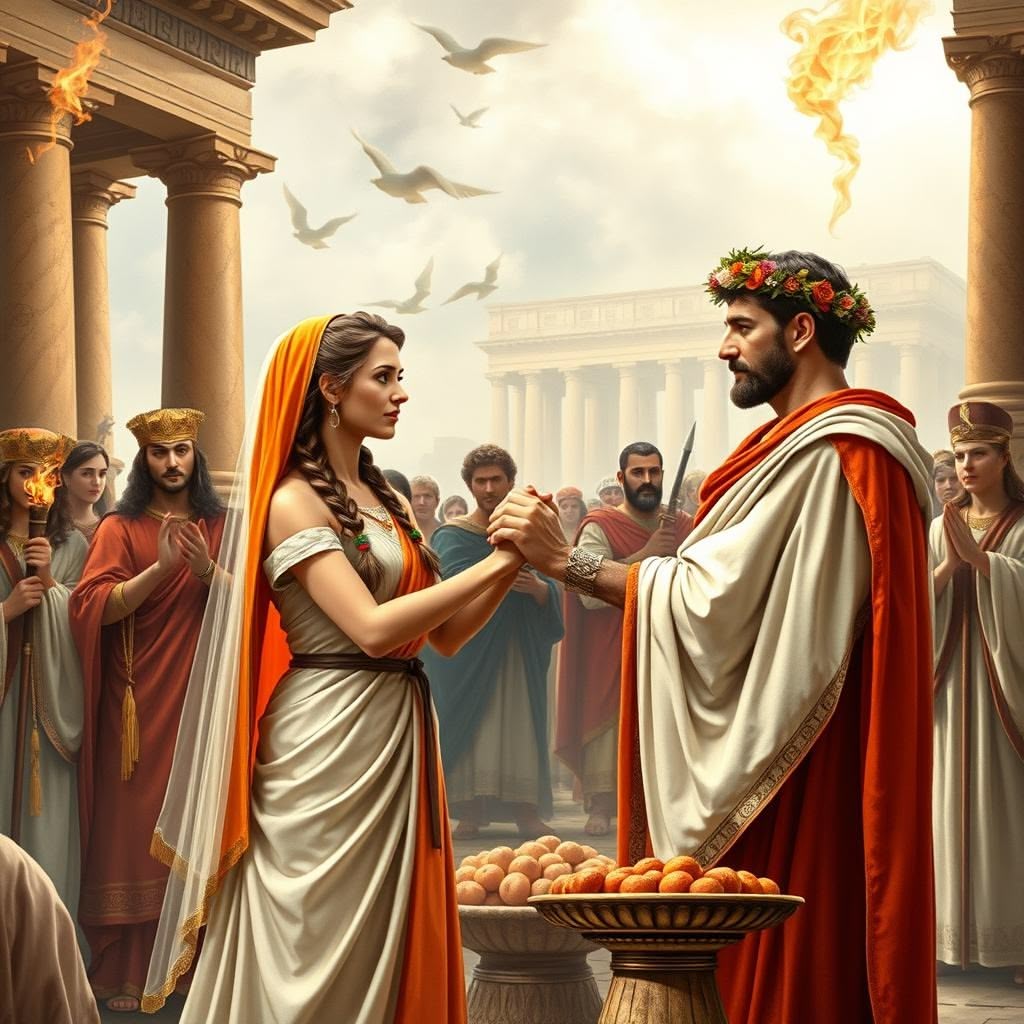Ancient Roman weddings were more than just celebrations of love; they were important social contracts that created alliances between families. These marriages had political, economic, and social purposes, reflecting the organized nature of Roman society. You can think of them as strategic partnerships designed to strengthen family status and secure wealth.
Dowries played a central role in these unions. They were not just gifts but legally significant transfers of property from the bride’s family to the husband. Dowries often included land, slaves, jewelry, or other valuables—assets that enhanced the husband’s household and symbolized the merging of two family fortunes.
This article explores Ancient Roman Weddings: Traditions, Dowries, and Social Contracts Explained, focusing on how these elements shaped marriage customs and influenced Roman social dynamics.
To gain a deeper understanding of this subject matter, one might consider exploring role-playing in Second Life where individuals immerse themselves in a virtual world that replicates aspects of ancient Rome.
Furthermore, it’s essential to acknowledge that the cultural backdrop against which these weddings occurred was rich and diverse. An exploration into Art and Culture in Ancient Rome, particularly through its sculpture and mosaics, can provide valuable insights into the societal norms and values that influenced these traditions.

Marriage as a Social Contract in Ancient Rome
Marriage in ancient Rome functioned primarily as a strategic alliance between families rather than a union based on personal affection. Families used marriage to:
- Strengthen political ties
- Secure economic advantages
- Enhance social status
The paterfamilias—the male head of the family—played a crucial role in arranging marriages, ensuring that these unions benefited the family’s long-term interests.
Legal Regulations Governing Marriages
Legal regulations tightly controlled these marriages. Key points include:
- Conubium: The legal right to marry, reserved for Roman citizens or those granted permission. Without conubium, a marriage lacked full legal recognition.
- Consent and contracts: Both families agreed to the marriage through formal contracts outlining obligations and property arrangements. A signed agreement sealed with a kiss symbolized this commitment.
- Age requirements: Typically, men married in their mid-20s; women often married earlier, sometimes as young as early teens, reflecting societal expectations.
Roman law treated marriage not just as a personal bond but as a public institution involving rights and duties between families. This legal framework reinforced the concept of marriage as a binding social contract that shaped Roman society’s structure and alliances. It’s important to note that Roman law, which governed these marriages, has played a crucial role in shaping modern legal systems.
Economic Influences on Marriage
Moreover, the economic aspects of these marriages were significantly influenced by agriculture, which was a crucial driver of Rome’s economic and social development during the Republic and Empire.
Political Ties through Entertainment
The spectacle of entertainment in Ancient Rome, such as gladiator games and chariot races, also played a role in strengthening political ties through strategic marriages among the elite.
Enhancing Social Status
Lastly, understanding the daily life of different social classes during this period can provide further insights into how marriage served as a tool for enhancing social status within Roman society. For more comprehensive information about these topics, you can explore resources from Men of Pompeii, your ultimate online resource dedicated to the fascinating world of Ancient Rome.

The Role of Dowries in Ancient Roman Weddings
The presentation of dowries held a central role in Ancient Roman Weddings: Traditions, Dowries. These dowries symbolized more than just wealth transfer; they represented the bride’s family’s commitment and social standing, reinforcing alliances forged through marriage. The dowry acted as both a financial security for the bride and an economic contribution to the new household.
Typical Contents of a Dowry
Typical contents of a dowry varied but often included:
- Land or property
- Monetary assets
- Slaves or servants
- Jewelry and fine clothing
- Household goods and valuables
Legally, once married, the dowry became the husband’s property to manage. However, laws protected the dowry to ensure it could be reclaimed by the bride or her family if the marriage ended without her fault. This legal status emphasized that while control transferred, ownership had conditional safeguards.
Influence of Dowries on Economic Stability and Social Prestige
The size and quality of a dowry influenced not only the economic stability of the couple but also their social prestige. Families used dowries strategically to strengthen political ties or elevate their status within Roman society. Such was the case with notable figures like Scipio Africanus, whose influence extended beyond personal wealth into realms of political power.
Moreover, the exchange of dowries was a formal part of wedding ceremonies, highlighting its significance beyond mere material wealth. Dowries underscored marriage as a complex social contract—linking families through legal, economic, and cultural bonds established at the wedding altar.
Reflection of Broader Themes in Ancient Roman Religion and Philosophy
The legal aspects surrounding dowries were also reflective of broader themes in Ancient Roman religion and philosophy. For instance, elements of Stoicism may have shaped perceptions around marriage and family obligations during this period.
Furthermore, these traditions have had a lasting impact on modern legal systems, as seen in the enduring influence of the Corpus Juris Civilis, which codified many ancient Roman legal principles including those related to marriage and dowries.
The ancient Roman society was a complex structure, with various classes and roles. At the top of this hierarchy were the patricians, the wealthy elite who wielded significant power and influence. They were often rich landowners living in luxury, distinct from the working-class plebeians. The plebeians, on the other hand, comprised the majority of the population and played a crucial role in shaping Rome’s political and economic landscape.
The architectural and engineering skills of the Romans are widely recognized, as seen in their masterpieces of ancient engineering. Their structures were not only practical but also served as a symbol of their power and cultural identity. Moreover, the importance of Roman engineering goes beyond just looks; it was also about connecting distant areas, making sure they were governed well and had cultural exchanges. This engineering achievements had a lasting impact on future generations, laying the groundwork for modern infrastructure systems.

Attire and Rituals at Ancient Roman Weddings
Traditional attire at ancient Roman weddings was rich in symbolism, reflecting the union’s social and religious significance. The bride wore a tunica recta, a straight, woven woolen dress, symbolizing purity and modesty. Over this, she draped an orange-red veil called the flammeum, whose fiery color represented warmth, fertility, and protection from evil spirits. The bride’s hair was styled with six braids gathered on top of her head, signifying harmony and order.
The groom typically donned a toga virilis, the formal white toga marking his status as a Roman citizen and adult male. A wreath of flowers or a garland often adorned his head during the ceremony, symbolizing honor and celebration.
Specific rituals reinforced the marriage’s sacred nature:
- Joining of hands (dextrarum iunctio): The couple clasped right hands during the ceremony, representing unity and mutual consent.
- Torchlight procession: The bride was led to her new home by torchlight, believed to ward off malevolent forces.
- Sacrificial offerings: Offerings were made to household gods (Lares) to bless the marriage and ensure fertility.
These traditional garments and symbolic ceremonies emphasized the transition of the bride from her father’s authority to that of her husband, embedding social hierarchy within the ritual fabric of Roman weddings. This societal structure was influenced by various factors including military power which shaped the empire, the extensive network of Roman roads that facilitated trade and movement, as well as the complex social system that produced gladiators. Understanding these aspects provides a deeper insight into the context in which these weddings took place.

Divorce, Adultery Laws, and Marriage Norms in Ancient Rome
Roman law allowed for a notably informal divorce process. Only one spouse needed to declare their intention to end the marriage in front of witnesses. This simplicity made divorce relatively common, especially among the upper classes who viewed marriage as a flexible social contract rather than a permanent bond.
Adultery laws revealed significant gender disparities. Wives faced stricter consequences for infidelity:
- An unfaithful wife could be divorced by her husband.
- She risked losing part or all of her dowry.
- Legal and social stigma attached more heavily to women caught in adultery.
Men, however, experienced more lenient treatment. While extramarital affairs were socially discouraged for husbands, enforcement was rare, and concubinage (long-term non-marital relationships) was often tolerated without legal penalty.
These legal frameworks shaped Roman societal views on monogamy and polygyny:
- Marriage was legally monogamous; one spouse only.
- Socially, male resource polygyny existed through concubinage.
- The law’s tolerance of male infidelity reinforced patriarchal norms.
- Women were expected to remain faithful as a symbol of family honor and legitimacy.
The flexibility in divorce combined with gendered adultery laws created a complex dynamic where marriage served political and economic purposes but also accommodated social practices that diverged from strict monogamy.

Conclusion
The exploration of Ancient Roman Weddings: Traditions, Dowries, and Social Contracts Explained reveals how deeply intertwined marriage was with societal norms and legal frameworks. These customs established clear roles within marriage, emphasizing the transfer of authority and property through dowries. The concept of marriage as a binding social contract shaped the way families negotiated alliances, secured inheritance rights, and maintained social order.
Key legacies influencing modern perspectives include:
- The formalization of marriage as a legal agreement between families rather than solely a romantic union.
- The use of dowries to protect women’s financial interests and influence inheritance distribution.
- Legal provisions governing divorce and adultery, highlighting gender expectations and societal roles.
- Rituals and attire symbolizing the transition of familial authority and social status.
Understanding these elements helps you appreciate how ancient Roman practices laid groundwork for contemporary marriage laws, inheritance customs, and evolving societal expectations around family and property. Furthermore, the influence of Roman mythology on modern culture provides additional context on how these ancient traditions continue to resonate in today’s society.

